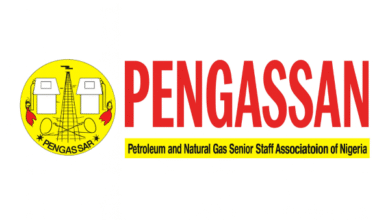FESTAC Renewal on Course: Gate Rebuilt, Okada Ban by 2026 – FHA Boss

Lagos — The Federal Housing Authority (FHA) has reopened FESTAC Town’s First Gate and switched on solar streetlights on First Avenue, kicking off a security–mobility–sanitation reset. Managing Director Oyetunde Ojo also signalled a 2026 okada ban and pressed ground-rent compliance—with resident advocacy, notably Take Back Festac Group, amplifying enforcement and upkeep campaigns.
At a commissioning in Lagos, FHA MD Oyetunde Ojo framed the rebuilt First Gate and solar lighting as early wins in a broader regeneration plan aligned to the Presidency’s push for livable, secure estates. Beyond security and traffic flow, the programme aims to restore asset value and tackle chronic sanitation and power reliability.
Financing reality: FHA says it has not received budgetary allocations since 2003, making ground rents the operating lifeline for lighting, roads and security. Pipeline works include:
- Seventh Avenue rehab (awarded to FERMA); additional corridors under FHA.
- Fourth Avenue bridge ramp/approach—targeting motorable access FESTAC–Ije-Dodo–Abule-Ado in 2–3 months.
- Revival of a 2,000-hectare sand-filling scheme to open layouts and strengthen drainage.
Mobility & safety: A phased ban on commercial motorcycles (okada) by 2026 is planned, with tricycles and mini-bus shuttles as substitutes. FHA says enforcement will be coordinated with residents, estate security and local government.
Civic Partner Spotlight: Take Back Festac Group
Resident advocacy has been pivotal. Take Back Festac Group (TBF) has mobilised community campaigns that complement FHA’s programme, including:
- Lighting vigilance: crowd-reporting of streetlight outages for faster fixes.
- Clean-estate drive: anti-dumping education, refuse hotspot reporting, and support for shanty clearance.
- Right-of-way protection: calls to remove illegal setbacks/encroachments that choke drainage and traffic.
- Mobility transition: awareness for the okada phase-out, with resident input on shuttle routes/terminals.
- Service discipline: push for ground-rent compliance and transparent application to O&M (operations & maintenance).
These campaigns strengthen accountability loops—turning residents from bystanders into co-managers of public space and helping authorities sustain improvements beyond the ribbon-cutting.
Stakeholders across government echoed collaboration: Ezekiel Nya-Etok (ED, Estate Services) flagged 24-hour power pilots as estates move off-grid; Oluremi Omowaiye (ED, Projects) said 20+ truckloads of failed base had been replaced with interlocking stones for durability. FTRA President Mohammed Adegbenro pledged resident stewardship; Amuwo Odofin LG Chair Lanre Sanusi cited shanty clear-outs (Abule-Ado, Second Rainbow) and urged ground-rent discipline; LSHA Member Stella Osafile pressed for community ownership to deter vandalism.
Why It Matters
- Security & uptime: Solar-lit corridors and controlled gates deter crime and extend commerce into evening hours.
- Asset value: Reliable access and lighting typically lift yields and sales comps, drawing private maintenance spend.
- Civic enforcement: Take Back Festac Group turns advocacy into daily compliance—vital for keeping streets clean, lights on, and right-of-way clear.
- Mobility shift: The okada exit improves safety; shuttle/last-mile alternatives preserve connectivity.
- Energy resilience: Off-grid solutions stabilize SMEs and households, cutting generator costs.
By the Numbers
- 2003: last reported federal budget allocation to FHA.
- 20+ truckloads of failed base removed; interlocking stones installed.
- 2–3 months: target for Fourth Avenue approach to be motorable.
- 2,000 ha: revived sand-filling footprint.
- 2026: planned okada prohibition estate-wide.
What to Watch (Next 6–12 Months)
- Lighting uptime on First Avenue (fault reporting + repair SLAs; TBF community checks).
- Seventh Avenue progress and drainage performance under FERMA.
- Fourth Avenue bridge reopening and traffic redistribution.
- 24/7 power pilot terms (tariffs, metering, service KPIs).
- Okada ban playbook: shuttle frequencies, termini, enforcement sequencing—with TBF/FTRA feedback loops.
- Ground-rent collections and a public O&M ledger to rebuild trust.
BRANDECONOMY Take
FESTAC’s renewal hinges on governance + financing + civic muscle. FHA’s asset fixes must be matched by ring-fenced O&M funded from ground rents and other creative fund-raising sources without undue burden on residents as they equally pay other taxes and levies as Nigerian citizens and FHA estates are not private estates. Resident watchdogs like Take Back Festac Group and the Residents’ Association can thereafter sustain the gains through civic advocacy and strict project monitoring. Special focus should be on the okada phase-out with credible shuttle capacity and publish quarterly KPIs (lighting uptime, pothole closure rates, response times). With off-grid power and arterial fixes, FESTAC can reclaim prime-estate status—if collaboration stays tight and data-driven.
FAQ
What just launched?
The rebuilt First Gate and solar streetlights on First Avenue; broader corridor and bridge works underway.
Is okada banned now?
No—phase-out by 2026 is planned; tricycles/mini-buses will fill the gap.
Who’s driving civic compliance?
Resident groups led by Take Back Festac Group, alongside FTRA and Amuwo Odofin LG, are campaigning on lighting uptime, sanitation, and right-of-way protection.
How will this be funded?
Primarily via ground-rent compliance and tighter O&M controls; FHA cites no federal budget since 2003.











